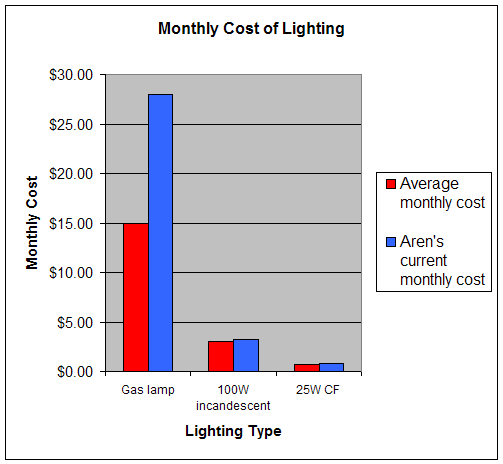IMPORTANT NOTE: This article is not anti-Social Security. It criticizes how the American left has led us to magical thinking about Social Security, that worthless IOUs are in fact a huge, redeemable asset that keeps Social Security solvent for many decades.
The Social Security “Trust Fund” is among the biggest lies of American liberals. It is just a fancy accounting trick, a la Enron and WorldCom.
Consider this analogy:
Sam sets aside money for a future expense, suppose for replacing his house’s A/C. Sam knows it only has a year left, and he needs $2400 to replace it.
Sam save $200 per month. He puts it in the piggy bank on his dresser. At the same time, he “borrows” this monthly $200 so that he can live more lavishly: eat out more, buy more clothes, etc. He replaces this $200 with an IOU.
The 12 months passed. As predicted, Sam’s A/C conks out. Sam needs that saved $2400 to repair his A/C. He opens his piggy bank and finds 12 $200 IOUs. The A/C repairman only accepts dollars, not IOUs. Sam can’t magically produce this $2400, so he has to take out debt to pay the repairman.
Woah, what happene?
If you look at Sam’s savings and borrowings as separate activities, then yes, we can legalistically say Sam “saved” $2400. But only an idiot would look at it that way. Sam is one entity. The only way Sam can save money is if more cash comes in than goes out. That didn’t happen: Sam spent that $200 “savings” as soon as he got it.
What would happen if I replaced “Sam” with “Uncle Sam”?
Uncle Sam sets aside money for a future expense, say for a date about 13 years away when its senior retirement system starts paying out more than it brings in. Uncle Sam sets aside billions per month towards this expense, and he puts it in the piggy bank on his dresser. At the same time, Uncle Sam “borrows” every last penny of these monthly billions so that he can live more lavishly.
Suppose the 13 years have passed, and, as predicted, Uncle Sam needs to pay out more senior retirement money than he takes in? Uncle Sam needs to tap those billions he saved.
Uncle Sam opens his piggy bank and only finds 156 IOUs. Seniors need dollars, not IOUs! Uncle Sam can’t produce these billions of dollars magically, so he has to take out billions and billions of additional debt each year to pay the seniors. (Or he can stiflingly raise taxes or drastically reduce spending or devalue the currency.)
That piggy bank is the mythical “Social Security Trust Fund.” Sam’s piggy bank and Uncle Sam’s “trust fund” are both full of worthless IOUs.
Instead of “IOU,” I could have written “federal bond.” The concept is the same. When you owe money to yourself, it’s an IOU. If the federal government buys its own bond, that is also an IOU. You can’t enforce debt you owe to yourself, so an IOU is just an accounting trick.
How does the government “invest” in its own bonds?
A payroll tax finances the Social Security system. Right now this tax pulls in more than the system doles out in retirement benefits, leaving a surplus. Social Security technically “invests” its surplus into US bonds.
Who issues US bonds? What is the Social Security part of? The answer to both questions is “the federal government.” So the federal government is buying bonds from itself!
You can’t owe money to yourself. Again, that is an accounting trick. A more realistic way of looking at the big picture is that Social Security surpluses are diverted to Congress to pay a chunk of our $2 trillion annual federal budget. Congress has become dependent on this chunk to maintain current spending levels. (See http://archives.cnn.com/2001/ALLPOLITICS/08/28/budget/)
US federal government indebtedness is in two major parts: the “accounting trick” IOU debt and externally held debt, which is are bonds owned by private individuals, foreign governments, corporations, state and local governments, pensions, and mutual funds.
When it comes down to it, the externally held debt is all that matters. A single bill of Congress can legally wipe away all internal debts; again, remember that internally held debt is just IOUs, paper tricks, accounting shams.
A recently published figure is that all US indebtedness is over $7,300,000,000,000 (source). Of that, about $3,800,000,000,000 (52%) is internal debt, the IOUs. The true United States indebtedness, i.e., debt held by external entities, is “only” $3,600,000,000,000.
What is going to happen between now and 2018? Social Security’s payout will gradually increase to where it is 100% of payroll tax revenue. As this happens, Social Security can transfer less and less money to Congress, so we will increasingly see one or more of more taxes, less spending elsewhere, more debt, or devaluing the dollar (printing more money).
When 2018 finally hits, when Social Security transfers $0 to Congress, it just gets worse. Plain and simple, there is no simple fix.
Irresponsible American liberals treat the Social Security system as a separable, independent unit of the US government. They wrap that with complex theories about “contracts” and “generational entitlement” and so on.
No matter how many words apologists throw at that logic, they still cannot escape that the IOUs are worthless.
We’ve got to stop magical thinking. The federal government and all its programs wrap up into one entity. It has various forms of income: income taxes, payroll taxes, tariffs, fines, etc. And it has various forms of spending: military, welfare, Social Security, etc. We will never solve Social Security’s problems until leaders start taking such a holistic view.
While redoing our landscape, we ripped out a nonfunctional gas lamp because it had rotted at the base.

